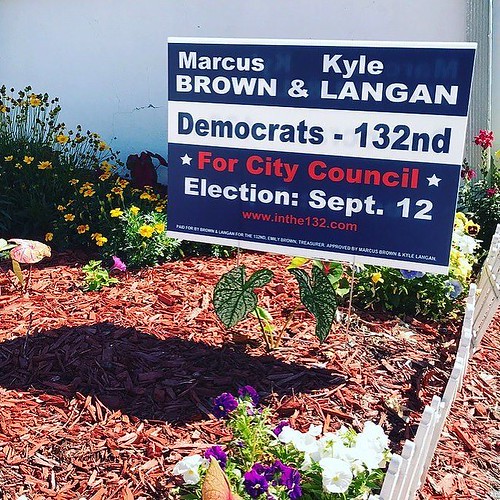Hinese hamster ovary (CHO) cells [35] (A1 and A3) or human embryonic kidney (HEK) 293 cells (A2A) stably expressing a hAR subtype (Table 1). Receptor binding assays: [3H]8-Cyclopentyl-1,3-dipropylxanthine ([3H]DPCPX, 120 Ci/mmol) and [125I]N6-(4-amino-3-iodobenzyl)adenosine-5′-N-methyluronamide ([125I]I-AB-MECA, 2200 Ci/ mmol) were purchased from Perkin lmer Life and 11089-65-9 site Analytical Science (Boston, MA). [3H](2-[p-(2-Carboxyethyl)phenyl-ethylamino]-5′-N-ethylcarboxamido-adenosine) ([3H]CGS21680, 39 Ci/ mmol) was purchased from American Radiolabeled Chemicals, Inc. (St. Louis, MO). Other pharmacological reagents were purchased from Tocris-R D Systems, Inc. (Minneapolis, MN). 1676428 Test compounds were prepared as 5 mM stock solutions in DMSO and stored frozen. Cell Culture and Membrane Preparation: CHO cells stably expressing the recombinant hA1 and hA3ARs, and HEK-293 cells stably expressing the hA2AAR were cultured in Dulbecco’s modified Eagle medium (DMEM) and F12 (1:1) supplemented with 10 fetal bovine serum, 100 units/mL penicillin, 100 mg/mL streptomycin, and 2 mmol/mL glutamine. In addition, 800 mg/mL geneticin was added to the A2A media, while 500 mg/mL hygromycin was added to the A1 and A3 media. After harvesting, cells were homogenized and suspended in PBS. Cells were then centrifuged at 240 g for 5 min, and the pellet was resuspended in 50 mM Tris-HCl buffer (pH 7.5) containing 10 mM MgCl2. The suspension was homogenized and was then ultra-centrifuged at 14,330 g for 30 min at 4uC. The resultant pellets  were resuspended in Tris buffer and incubated with adenosine deaminase (3 units/mL) for 30 min at 37uC. The suspension was homogenized with an electric homogenizer for 10 sec, pipetted into 1 mL vials and then stored at -80uC until the binding experiments. The protein concentration was measured using the BCA Protein Assay Kit from Pierce Biotechnology, Inc. (Rockford, IL) [36]. Binding assays: Standard radioligand binding assays for A1, A2A, and A3ARs were used [37?9]. Into each tube in the binding assay was added 50 mL of increasing concentrations of the test ligand in Tris-HCl buffer (50 mM, pH 7.5) containing 10 mM MgCl2, 50 mL of the appropriate agonist radioligand, and finally 100 mL of membrane suspension. For the A1AR (22 mg of protein/tube) the radioligand used was [3H]DPCPX (final concentration of 0.5 nM). For the A2AAR (20 mg/tube) the radioligand used was [3H]CGS21680 (final concentration 10 nM). For the A3AR (21 mg/tube) the radioligand used was [125I]I-AB-MECA (final concentration 0.2 nM). Nonspecific binding was determined using a final concentration of 10 mM NECA diluted with the buffer. The mixtures were incubated at 25uC for 60 min in a shaking water bath. Binding reactions were terminated by filtration through Brandel GF/B filters under a reduced pressure using a M-24 cell harvester (Brandel, Gaithersburg, MD). Filters 15755315 were washed three times with 3 mL of 50 mM ice-cold Tris-HCl buffer (pH 7.5). Filters for A1 and A2AAR binding were placed in scintillation vials containing 5 mL of Hydrofluor scintillation buffer and counted using a Perkin Elmer Liquid Scintillation Analyzer (Tri-Carb 2810TR). Filters for A3AR binding were counted using a Packard Cobra II c-counter. Data analysis: Binding and functional parameters were calculated using Prism 5.0 software (buy GNF-7 GraphPAD, San Diego, CA,
were resuspended in Tris buffer and incubated with adenosine deaminase (3 units/mL) for 30 min at 37uC. The suspension was homogenized with an electric homogenizer for 10 sec, pipetted into 1 mL vials and then stored at -80uC until the binding experiments. The protein concentration was measured using the BCA Protein Assay Kit from Pierce Biotechnology, Inc. (Rockford, IL) [36]. Binding assays: Standard radioligand binding assays for A1, A2A, and A3ARs were used [37?9]. Into each tube in the binding assay was added 50 mL of increasing concentrations of the test ligand in Tris-HCl buffer (50 mM, pH 7.5) containing 10 mM MgCl2, 50 mL of the appropriate agonist radioligand, and finally 100 mL of membrane suspension. For the A1AR (22 mg of protein/tube) the radioligand used was [3H]DPCPX (final concentration of 0.5 nM). For the A2AAR (20 mg/tube) the radioligand used was [3H]CGS21680 (final concentration 10 nM). For the A3AR (21 mg/tube) the radioligand used was [125I]I-AB-MECA (final concentration 0.2 nM). Nonspecific binding was determined using a final concentration of 10 mM NECA diluted with the buffer. The mixtures were incubated at 25uC for 60 min in a shaking water bath. Binding reactions were terminated by filtration through Brandel GF/B filters under a reduced pressure using a M-24 cell harvester (Brandel, Gaithersburg, MD). Filters 15755315 were washed three times with 3 mL of 50 mM ice-cold Tris-HCl buffer (pH 7.5). Filters for A1 and A2AAR binding were placed in scintillation vials containing 5 mL of Hydrofluor scintillation buffer and counted using a Perkin Elmer Liquid Scintillation Analyzer (Tri-Carb 2810TR). Filters for A3AR binding were counted using a Packard Cobra II c-counter. Data analysis: Binding and functional parameters were calculated using Prism 5.0 software (buy GNF-7 GraphPAD, San Diego, CA,  USA). IC50 values obtained from binding inhibition curves were converted to Ki values using the Cheng-Prusoff equation [40]. Data were expressed.Hinese hamster ovary (CHO) cells [35] (A1 and A3) or human embryonic kidney (HEK) 293 cells (A2A) stably expressing a hAR subtype (Table 1). Receptor binding assays: [3H]8-Cyclopentyl-1,3-dipropylxanthine ([3H]DPCPX, 120 Ci/mmol) and [125I]N6-(4-amino-3-iodobenzyl)adenosine-5′-N-methyluronamide ([125I]I-AB-MECA, 2200 Ci/ mmol) were purchased from Perkin lmer Life and Analytical Science (Boston, MA). [3H](2-[p-(2-Carboxyethyl)phenyl-ethylamino]-5′-N-ethylcarboxamido-adenosine) ([3H]CGS21680, 39 Ci/ mmol) was purchased from American Radiolabeled Chemicals, Inc. (St. Louis, MO). Other pharmacological reagents were purchased from Tocris-R D Systems, Inc. (Minneapolis, MN). 1676428 Test compounds were prepared as 5 mM stock solutions in DMSO and stored frozen. Cell Culture and Membrane Preparation: CHO cells stably expressing the recombinant hA1 and hA3ARs, and HEK-293 cells stably expressing the hA2AAR were cultured in Dulbecco’s modified Eagle medium (DMEM) and F12 (1:1) supplemented with 10 fetal bovine serum, 100 units/mL penicillin, 100 mg/mL streptomycin, and 2 mmol/mL glutamine. In addition, 800 mg/mL geneticin was added to the A2A media, while 500 mg/mL hygromycin was added to the A1 and A3 media. After harvesting, cells were homogenized and suspended in PBS. Cells were then centrifuged at 240 g for 5 min, and the pellet was resuspended in 50 mM Tris-HCl buffer (pH 7.5) containing 10 mM MgCl2. The suspension was homogenized and was then ultra-centrifuged at 14,330 g for 30 min at 4uC. The resultant pellets were resuspended in Tris buffer and incubated with adenosine deaminase (3 units/mL) for 30 min at 37uC. The suspension was homogenized with an electric homogenizer for 10 sec, pipetted into 1 mL vials and then stored at -80uC until the binding experiments. The protein concentration was measured using the BCA Protein Assay Kit from Pierce Biotechnology, Inc. (Rockford, IL) [36]. Binding assays: Standard radioligand binding assays for A1, A2A, and A3ARs were used [37?9]. Into each tube in the binding assay was added 50 mL of increasing concentrations of the test ligand in Tris-HCl buffer (50 mM, pH 7.5) containing 10 mM MgCl2, 50 mL of the appropriate agonist radioligand, and finally 100 mL of membrane suspension. For the A1AR (22 mg of protein/tube) the radioligand used was [3H]DPCPX (final concentration of 0.5 nM). For the A2AAR (20 mg/tube) the radioligand used was [3H]CGS21680 (final concentration 10 nM). For the A3AR (21 mg/tube) the radioligand used was [125I]I-AB-MECA (final concentration 0.2 nM). Nonspecific binding was determined using a final concentration of 10 mM NECA diluted with the buffer. The mixtures were incubated at 25uC for 60 min in a shaking water bath. Binding reactions were terminated by filtration through Brandel GF/B filters under a reduced pressure using a M-24 cell harvester (Brandel, Gaithersburg, MD). Filters 15755315 were washed three times with 3 mL of 50 mM ice-cold Tris-HCl buffer (pH 7.5). Filters for A1 and A2AAR binding were placed in scintillation vials containing 5 mL of Hydrofluor scintillation buffer and counted using a Perkin Elmer Liquid Scintillation Analyzer (Tri-Carb 2810TR). Filters for A3AR binding were counted using a Packard Cobra II c-counter. Data analysis: Binding and functional parameters were calculated using Prism 5.0 software (GraphPAD, San Diego, CA, USA). IC50 values obtained from binding inhibition curves were converted to Ki values using the Cheng-Prusoff equation [40]. Data were expressed.
USA). IC50 values obtained from binding inhibition curves were converted to Ki values using the Cheng-Prusoff equation [40]. Data were expressed.Hinese hamster ovary (CHO) cells [35] (A1 and A3) or human embryonic kidney (HEK) 293 cells (A2A) stably expressing a hAR subtype (Table 1). Receptor binding assays: [3H]8-Cyclopentyl-1,3-dipropylxanthine ([3H]DPCPX, 120 Ci/mmol) and [125I]N6-(4-amino-3-iodobenzyl)adenosine-5′-N-methyluronamide ([125I]I-AB-MECA, 2200 Ci/ mmol) were purchased from Perkin lmer Life and Analytical Science (Boston, MA). [3H](2-[p-(2-Carboxyethyl)phenyl-ethylamino]-5′-N-ethylcarboxamido-adenosine) ([3H]CGS21680, 39 Ci/ mmol) was purchased from American Radiolabeled Chemicals, Inc. (St. Louis, MO). Other pharmacological reagents were purchased from Tocris-R D Systems, Inc. (Minneapolis, MN). 1676428 Test compounds were prepared as 5 mM stock solutions in DMSO and stored frozen. Cell Culture and Membrane Preparation: CHO cells stably expressing the recombinant hA1 and hA3ARs, and HEK-293 cells stably expressing the hA2AAR were cultured in Dulbecco’s modified Eagle medium (DMEM) and F12 (1:1) supplemented with 10 fetal bovine serum, 100 units/mL penicillin, 100 mg/mL streptomycin, and 2 mmol/mL glutamine. In addition, 800 mg/mL geneticin was added to the A2A media, while 500 mg/mL hygromycin was added to the A1 and A3 media. After harvesting, cells were homogenized and suspended in PBS. Cells were then centrifuged at 240 g for 5 min, and the pellet was resuspended in 50 mM Tris-HCl buffer (pH 7.5) containing 10 mM MgCl2. The suspension was homogenized and was then ultra-centrifuged at 14,330 g for 30 min at 4uC. The resultant pellets were resuspended in Tris buffer and incubated with adenosine deaminase (3 units/mL) for 30 min at 37uC. The suspension was homogenized with an electric homogenizer for 10 sec, pipetted into 1 mL vials and then stored at -80uC until the binding experiments. The protein concentration was measured using the BCA Protein Assay Kit from Pierce Biotechnology, Inc. (Rockford, IL) [36]. Binding assays: Standard radioligand binding assays for A1, A2A, and A3ARs were used [37?9]. Into each tube in the binding assay was added 50 mL of increasing concentrations of the test ligand in Tris-HCl buffer (50 mM, pH 7.5) containing 10 mM MgCl2, 50 mL of the appropriate agonist radioligand, and finally 100 mL of membrane suspension. For the A1AR (22 mg of protein/tube) the radioligand used was [3H]DPCPX (final concentration of 0.5 nM). For the A2AAR (20 mg/tube) the radioligand used was [3H]CGS21680 (final concentration 10 nM). For the A3AR (21 mg/tube) the radioligand used was [125I]I-AB-MECA (final concentration 0.2 nM). Nonspecific binding was determined using a final concentration of 10 mM NECA diluted with the buffer. The mixtures were incubated at 25uC for 60 min in a shaking water bath. Binding reactions were terminated by filtration through Brandel GF/B filters under a reduced pressure using a M-24 cell harvester (Brandel, Gaithersburg, MD). Filters 15755315 were washed three times with 3 mL of 50 mM ice-cold Tris-HCl buffer (pH 7.5). Filters for A1 and A2AAR binding were placed in scintillation vials containing 5 mL of Hydrofluor scintillation buffer and counted using a Perkin Elmer Liquid Scintillation Analyzer (Tri-Carb 2810TR). Filters for A3AR binding were counted using a Packard Cobra II c-counter. Data analysis: Binding and functional parameters were calculated using Prism 5.0 software (GraphPAD, San Diego, CA, USA). IC50 values obtained from binding inhibition curves were converted to Ki values using the Cheng-Prusoff equation [40]. Data were expressed.
